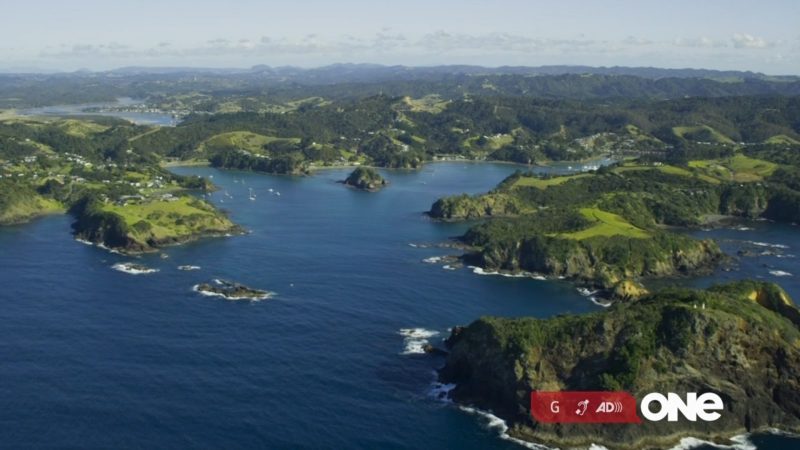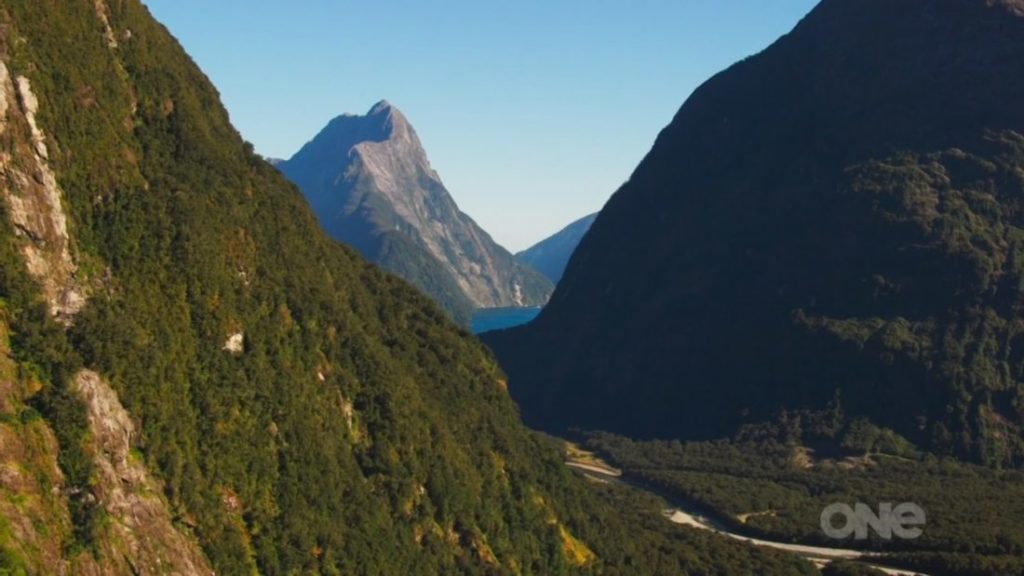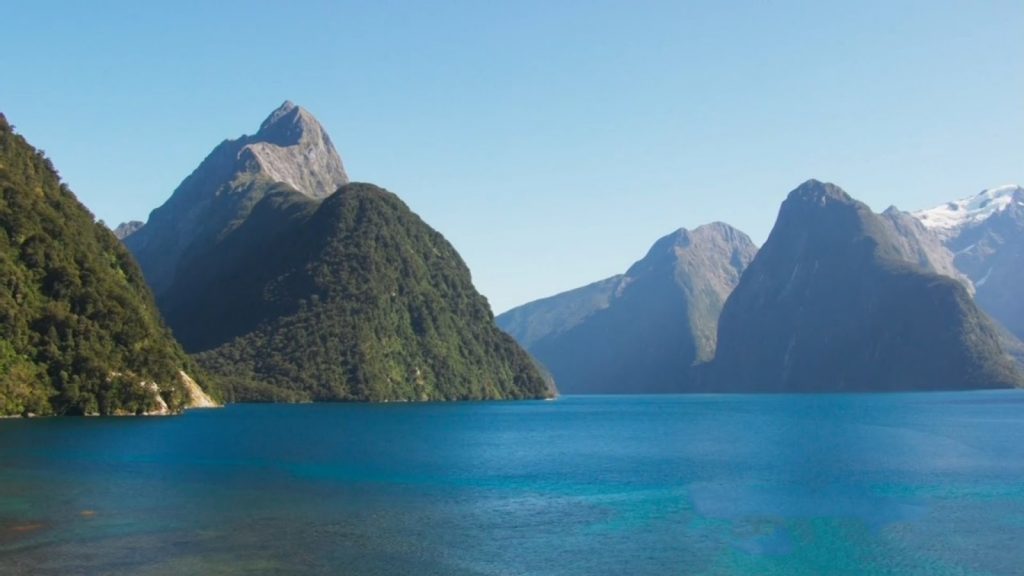In Railway Walks with Julia Bradbury episode 2 viewers are taken on an enchanting journey through one of the most picturesque and tranquil regions of North Wales: the Mawddach estuary. This captivating stretch between the historic town of Dolgellau and the charming coastal resort of Barmouth offers a blend of breathtaking natural beauty and rich history, making it a hidden gem in the heart of Snowdonia.
Julia Bradbury sets out on her walk from Dolgellau, a quaint market town nestled at the foot of the Cader Idris mountain range. Known for its stunning landscapes and historic architecture, Dolgellau provides the perfect starting point for exploring the scenic Mawddach estuary. The area is renowned for its unspoiled beauty, characterized by sweeping vistas of marshlands, woodlands, and the glittering waters of the estuary itself.
As Julia makes her way along the trail, she delves into the history of this lesser-known part of Snowdonia. In the 1860s, the arrival of the railway transformed the region, making it accessible to a wave of holidaymakers from the industrial cities of England. The railway not only opened up the area for tourism but also played a significant role in the local economy, facilitating the transport of goods and people.
The railway line, which once connected the valley to bustling urban centers, is now a serene pathway that allows visitors to retrace the steps of Victorian-era tourists. The Mawddach Trail, as it is known today, follows the old railway route, offering a unique blend of natural beauty and historical significance. Julia’s journey along this trail is a delightful exploration of both past and present.
Throughout the episode, Julia encounters a variety of landscapes, each more stunning than the last. The estuary is home to a diverse array of wildlife, and Julia takes time to appreciate the rich biodiversity of the area. Birds such as herons, ospreys, and kingfishers can often be seen along the water’s edge, while the surrounding woodlands are inhabited by a variety of mammals and insects.
One of the highlights of the walk is the iconic Barmouth Bridge, a wooden viaduct that spans the mouth of the estuary. Built in 1867, the bridge is an engineering marvel of its time and offers spectacular views of the surrounding landscape. As Julia crosses the bridge, she reflects on the remarkable blend of natural and man-made beauty that characterizes the Mawddach estuary.
In addition to its natural and historical allure, the area is steeped in local culture and folklore. Julia shares stories of the region’s past, including tales of ancient settlements and legends associated with the Cader Idris mountain. These stories add a layer of mystique to the already enchanting scenery, enriching the viewer’s experience of the walk.
Railway Walks with Julia Bradbury episode 2
Julia’s journey concludes in the seaside town of Barmouth, a place with a rich maritime history and a vibrant community. Barmouth’s sandy beaches and quaint streets provide a stark contrast to the rugged landscapes of the estuary and mountains. Here, Julia explores the town’s historical sites, including the Barmouth Lifeboat Station and the picturesque harbor, before enjoying a well-deserved rest by the sea.
Throughout the episode, Julia Bradbury’s passion for the great outdoors and her deep appreciation for the region’s history and culture shine through. Her engaging narration and keen observations bring the story of the Mawddach estuary to life, making it a must-visit destination for anyone looking to experience the beauty and tranquility of Snowdonia.
In “Railway Walks with Julia Bradbury,” the journey is as much about the stories and history of the places visited as it is about the physical act of walking. This episode, set against the backdrop of the stunning Mawddach estuary, perfectly encapsulates this ethos. Julia’s walk is not just a scenic stroll but an immersive exploration of a region that has been shaped by both natural forces and human ingenuity.
As viewers follow Julia along the Mawddach Trail, they are invited to see the world through her eyes, discovering the hidden gems and untold stories of Snowdonia. The episode serves as a reminder of the enduring allure of railway journeys and the timeless beauty of the Welsh countryside. For those inspired to visit, the Mawddach estuary promises an unforgettable experience, rich in natural wonders and historical intrigue.
Discovering Snowdonia’s Hidden Railway Heritage
The Allure of Britain’s Disused Railway Lines
Picture a silent network of embankments, platforms, and viaducts snaking through the British countryside. These are the remnants of a once-mighty rail empire that shaped the nation for over a century. Today, these 10,000 miles of disused lines offer a unique window into Britain’s past and a perfect platform for exploration.
For many adventurers and history buffs, these forgotten tracks have become a siren song, beckoning them to lace up their hiking boots and step back in time. As you walk along these paths, you can almost hear the ghostly whistle of steam engines and feel the vibrations of trains long since departed.
Introducing Dolgellau and Southern Snowdonia
Nestled in the heart of Wales lies the charming market town of Dolgellau, a gateway to the southern hills of Snowdonia National Park. While northern Wales often steals the spotlight with its dramatic mountain scenery, the south harbors secrets waiting to be uncovered.
Dolgellau, with its slate-grey buildings and winding streets, serves as the perfect launchpad for our railway adventure. The town stands as a testament to Welsh resilience, having weathered the ebb and flow of industries from wool to gold mining. Now, it welcomes visitors eager to explore the hidden corners of Snowdonia.
The Promise of a Unique Railway Walk Experience
As we embark on this journey, we’re not just following any old hiking trail. We’re tracing the footsteps of countless passengers and railway workers who once traversed this line. This path promises a surprising history and breathtaking scenery, all while revealing one of Snowdonia’s quieter corners.
The railway walk offers a unique perspective on the landscape, quite literally carving its way through hills and spanning rivers. It’s a testament to Victorian engineering prowess and a reminder of how railways once connected even the most remote parts of Britain to the bustling cities beyond.
Get ready to discover hidden gems, from quaint station buildings frozen in time to sweeping vistas of the Mawddach Estuary. This journey will not only treat your eyes but also ignite your imagination, transporting you to an era when the rhythmic chug of trains echoed through these valleys.
The Historical Significance of Welsh Railways
The Race to Connect Wales: Great Western Railway vs. Cambrian Railway
In the mid-19th century, Wales became the stage for an epic railway battle. Two titans of the tracks, the Great Western Railway (GWR) and the Cambrian Railway, locked horns in a fierce competition to conquer the Welsh landscape. Their goal? To be the first to connect the rugged Welsh coastline with the bustling industrial heartlands of England.
The GWR, a behemoth of British rail, pushed westward with determination. They carved their way through the Welsh countryside, laying tracks with the precision of a master craftsman. Meanwhile, the smaller but equally ambitious Cambrian Railway fought tooth and nail to establish its presence. This David and Goliath struggle shaped the future of Welsh transportation and tourism for generations to come.
The Golden Age of Welsh Rail Travel
As the railway network blossomed, so did a new era of Welsh tourism. Suddenly, the breathtaking landscapes of Snowdonia were no longer the exclusive playground of the wealthy elite. Instead, they became accessible to a wider audience, hungry for adventure and natural beauty.
Picture steam engines chugging their way through misty valleys, carrying wide-eyed passengers from Birmingham and Manchester. These iron horses opened up a world of possibility, transforming sleepy Welsh villages into bustling holiday destinations. The railways didn’t just transport people; they carried dreams, aspirations, and a newfound appreciation for Wales’s natural wonders.
The Impact of the Beeching Cuts on Welsh Railways
However, the golden age of rail couldn’t last forever. In the 1960s, Dr. Richard Beeching wielded his infamous axe, and the Welsh railway network felt its sharp edge. Many lines, once vital arteries of commerce and tourism, were deemed surplus to requirements. They vanished from maps, leaving behind ghostly reminders of their former glory.
The Beeching cuts were like a seismic shift in the Welsh landscape. Communities that had grown around the railways suddenly found themselves isolated. The rhythm of daily life, once set to the punctual arrival and departure of trains, fell silent. Yet, even as many lines disappeared, they left an indelible mark on the Welsh countryside – a legacy that would later be rediscovered and cherished by a new generation of explorers and history enthusiasts.
A Journey Through Time: Walking the Dolgellau to Barmouth Line
Starting Point: Dolgellau’s Railway Legacy
As you stand in Dolgellau, the whispers of its railway past surround you. The town, once a bustling hub of rail activity, now holds its secrets close. Yet, for those with a keen eye, the clues are everywhere. The old station site, though long gone, still echoes with the phantom whistles of departed trains.
Imagine the scene a century ago: porters bustling about, passengers eagerly awaiting their coastal adventure, and the air thick with coal smoke. Today, the quiet streets belie this vibrant history. However, as you set foot on the old railway path, you’re stepping into the footprints of countless travelers who came before. The journey begins here, where the past and present intertwine like tracks on a railway switch.
The Mawddach Estuary: A Blend of Natural Beauty and Industrial History
As you leave Dolgellau behind, the Mawddach Estuary unfolds before you like a living canvas. This stunning waterway, flanked by rolling hills, isn’t just a feast for the eyes. It’s a testament to the delicate balance between nature and human industry that has shaped this landscape for centuries.
On one side, you’ll spot the remnants of Wales’s golden age – quite literally. The north bank of the estuary was once dotted with gold mines, their spoil heaps now softened by time and vegetation. Meanwhile, the railway path guides you along the south bank, offering unparalleled views of this unique ecosystem. Here, the ebb and flow of tides have created a haven for wildlife, from wading birds to the occasional seal. It’s a reminder that even as railways carved their way through the land, nature found a way to adapt and thrive.
Penmaenpool: A Preserved Snapshot of Railway Life
Midway along your journey, you’ll encounter Penmaenpool – a name that rolls off the tongue like a steam engine picking up speed. This quaint spot serves as a perfectly preserved vignette of railway life. The signal box, painted in the iconic cream and brown of the Great Western Railway, stands sentinel over tracks long silent.
But Penmaenpool is more than just a pretty picture. It’s a living museum where you can almost hear the clack of telegraph keys and the shouts of porters loading freight. The nearby George Hotel, a centuries-old establishment, still welcomes weary travelers, just as it did when trains ruled the rails. Take a moment here to soak in the atmosphere and perhaps raise a glass to the railway workers of yesteryear.
Arthog and the Remnants of World War II
As you approach Arthog, the landscape tells a tale of dramatic change. This tiny village, nestled against the estuary, was once a hive of industrial activity. The scars of slate quarrying are still visible on the hillsides, silent reminders of the area’s mining heritage.
But Arthog holds another, more surprising secret. Hidden among the peaceful scenery are the concrete remains of World War II defenses. These stark structures, now weathered and overgrown, speak of a time when this tranquil corner of Wales braced itself for potential invasion. It’s a poignant juxtaposition – the ruins of war set against a backdrop of natural beauty. As you walk, consider how these layers of history have shaped the land and its people.
The Grand Finale: Barmouth Bridge and Its Engineering Marvel
Your journey reaches its crescendo as you approach Barmouth Bridge. This magnificent structure, stretching over 2,000 feet across the Mawddach Estuary, is nothing short of an engineering marvel. Built in 1867, it stands as a testament to Victorian ingenuity and ambition.
As you step onto the bridge, take a moment to appreciate its construction. The wooden trestle spans, the iron sections, and the now-silent swing bridge mechanism all tell a story of innovation and determination. Walking across, with the estuary stretching out on either side, you’re not just crossing water – you’re spanning time itself. This bridge, still carrying trains and pedestrians alike, is a living link to the golden age of rail travel. It’s the perfect culmination of your journey, blending natural beauty, human achievement, and the enduring legacy of Welsh railways.
F.A.Q. Railway Walks with Julia Bradbury episode 2
Q.: What is the main focus of episode 2 of “Railway Walks with Julia Bradbury”?
A.: Episode 2 of “Railway Walks with Julia Bradbury” focuses on Julia’s journey through the picturesque Mawddach estuary in North Wales. The episode highlights the stunning natural beauty and rich history of the area between Dolgellau and Barmouth, showcasing how the arrival of the railway in the 1860s transformed this part of Snowdonia.
A.: The Mawddach estuary is considered a hidden gem in Snowdonia because it combines breathtaking landscapes with historical significance. Unlike more frequented parts of Snowdonia, the area between Dolgellau and Barmouth remains less visited, offering tranquil scenery characterized by marshlands, woodlands, and glittering estuary waters, as well as rich biodiversity and historical remnants from the Victorian railway era.
Q.: What historical significance does the railway hold in the Mawddach estuary region?
A.: The railway holds significant historical importance in the Mawddach estuary region as it revolutionized travel and tourism in the 1860s. It connected the remote and scenic valley to the bustling cities of England, bringing an influx of holidaymakers and boosting the local economy. The railway’s legacy continues today with the Mawddach Trail, which follows the old railway route, allowing visitors to experience the area’s historical and natural beauty.
Q.: What are some key highlights along Julia Bradbury’s walk in this episode?
A.: Key highlights along Julia Bradbury’s walk in this episode include the town of Dolgellau, known for its historic architecture and stunning landscapes, the wildlife-rich Mawddach estuary, and the iconic Barmouth Bridge. The bridge, a wooden viaduct built in 1867, offers spectacular views and is a remarkable example of Victorian engineering. Additionally, Julia explores local folklore and historical sites, enriching the narrative with tales of the past.
Q.: How does “Railway Walks with Julia Bradbury” enhance the viewer’s experience of the Mawddach estuary?
A.: “Railway Walks with Julia Bradbury” enhances the viewer’s experience of the Mawddach estuary by blending scenic beauty with engaging historical storytelling. Julia’s passionate narration and keen observations bring to life the region’s rich past, its cultural heritage, and its natural wonders. By following her journey, viewers gain a deeper appreciation of the area’s hidden gems and are inspired to explore the tranquil and picturesque landscapes of Snowdonia themselves.




